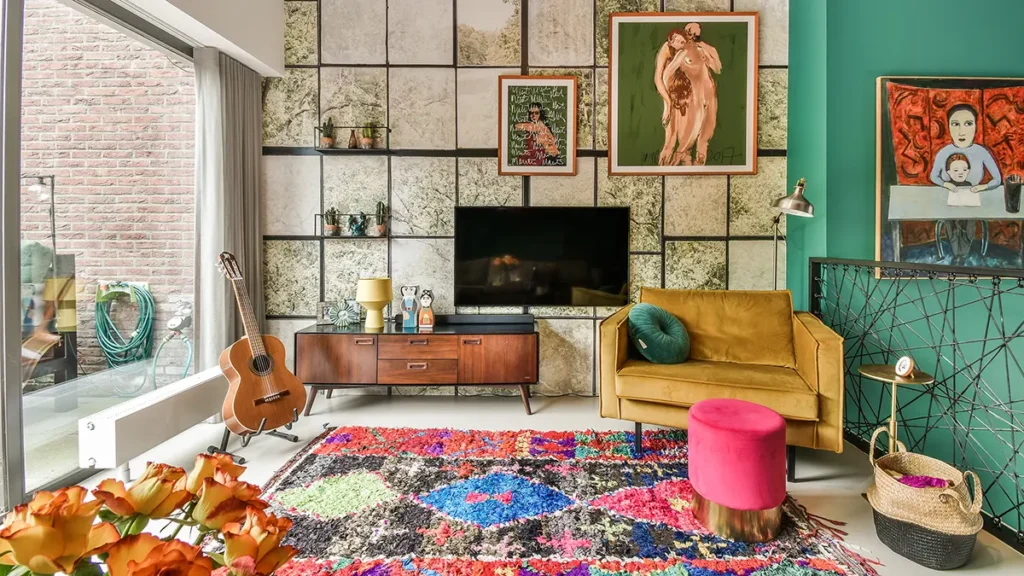Designer, writer and television presenter, Kevin McCloud leapt into our consciousness with his vastly successful Grand Designs show on Channel 4. This month, the affable architectural business owner gives a guide to clutter and minimalism
The distinction between clutter and minimalism in interior design is not just a matter of taste but a reflection of our inner selves. Some find comfort and creativity in rooms filled with memories and objects, while others seek tranquillity and clarity in spaces defined by the absence of excess.
This difference in preferences speaks volumes about our personalities, lifestyles and even our aspirations.
The Comfort of Clutter
At one end of the spectrum, clutter – as it’s often sneeringly labelled – is for many an example of life lived.
Each object, whether a book stacked precariously on a shelf, a collection of photographs, or souvenirs from travels, tells a story. Not mere possessions, but fragments of experiences, relationships and dreams.
For individuals who surround themselves with such personal artefacts, these spaces are comforting, instilling a sense of security and belonging. Their homes become a sanctuary where every item has sentimental value, offering visual and emotional stimuli sparking creativity and nostalgia.
Challenges of a Cluttered Space
However, this preference for a cluttered space is not without challenge and demands a delicate balance to avoid the descent into disorder. When every item is precious, how do you decide which is worth keeping in view and which is better stored away?
The line between comforting clutter and overwhelming chaos is thin, requiring constant negotiation and organisation to maintain a harmonious environment.

The Appeal of Minimalism
On the flip side, minimalism offers a stark contrast. Advocates argue for the virtues of simplicity, where less is indeed more. A minimalist space is characterised by clean lines, a monotone or restrained colour palette and a rigorous selection of items that serve both aesthetic and practical purposes.
The absence of clutter does not represent a lack of personality or warmth, but an invitation to appreciate the beauty and function of what remains. Such spaces are designed to evoke a sense of calm and order, providing a canvas that allows the mind to focus and the spirit to rest.
The Philosophy Behind Minimalism
However, minimalism is not merely an aesthetic choice but a philosophy requiring discipline and a conscious effort to resist the accumulation of unnecessary objects, as well as an approach to living and design which reflects commitment to quality over quantity.
It means the value of an object is not in its abundance but the ability to serve a purpose or bring joy. The challenge for minimalists lies in maintaining this discipline, in discerning the essential from the superfluous, and in finding warmth and character in simplicity.
Finding a Balance
Between these two extremes lies a spectrum of preferences, a reminder that our environments are deeply personal and reflective of our individual journeys.
Some find middle ground, incorporating elements of both to create spaces that feel organised yet personal, minimal yet warm. Others fluctuate between the two, experimenting with their surroundings as they evolve both personally and professionally.
Understanding this contrast is crucial for anyone interested in design, architecture or simply in creating a space that feels like home. It’s not about prescribing a right or wrong way to inhabit our spaces but about recognising the diversity of our needs and desires.
Whether you lean towards clutter or minimalism, the key is mindfulness in how we curate our spaces, ensuring they reflect our identity and support our well-being.
So, the debate between clutter and minimalism in interior design transcends mere aesthetics, a reflection of our relationship with our possessions and, by extension, our relationship with ourselves and the world around us. Whether we find joy in abundance or in simplicity, our spaces are a testament to our journey through life.









